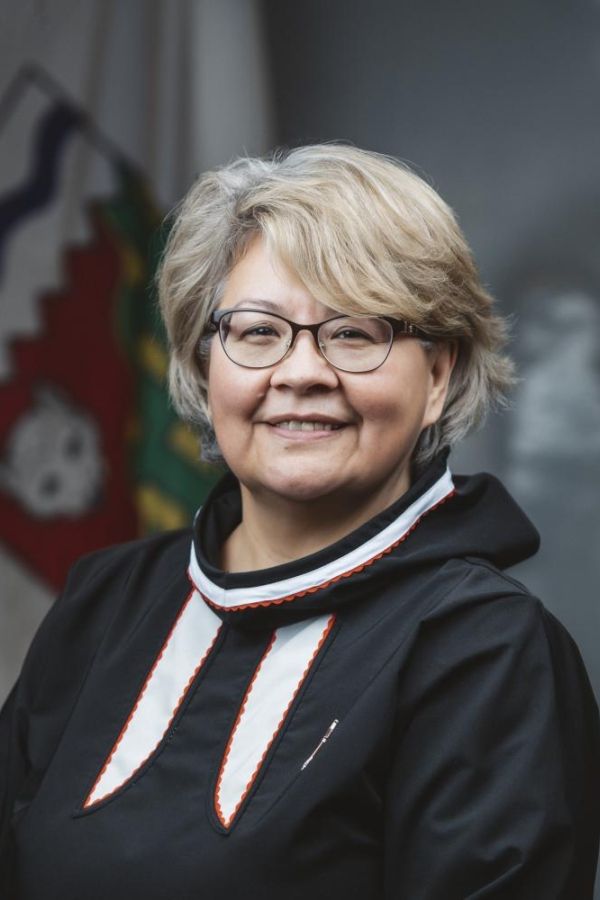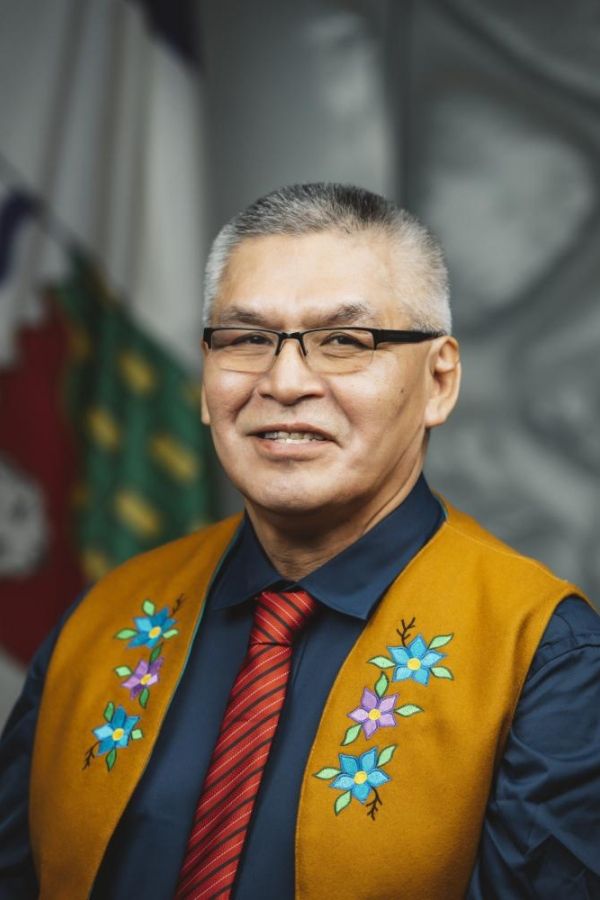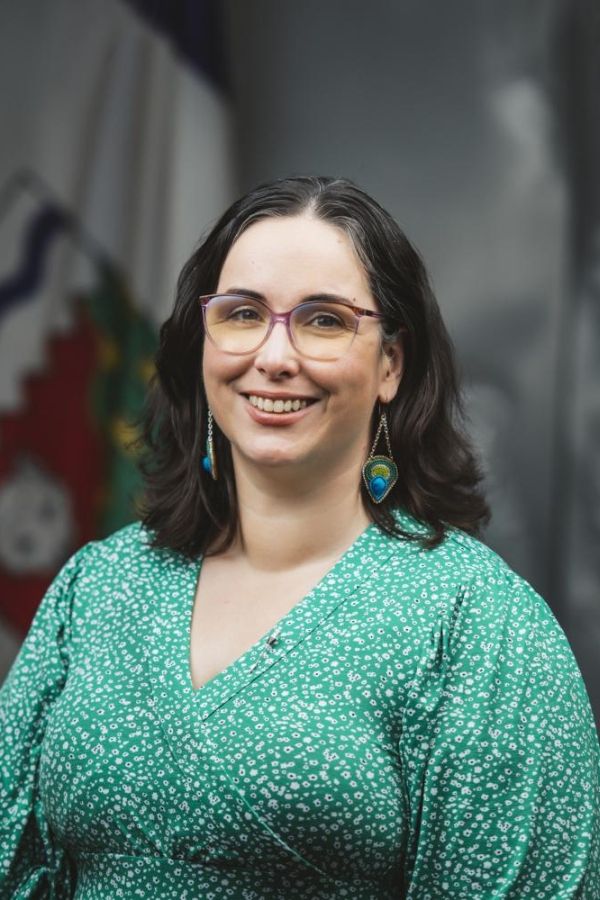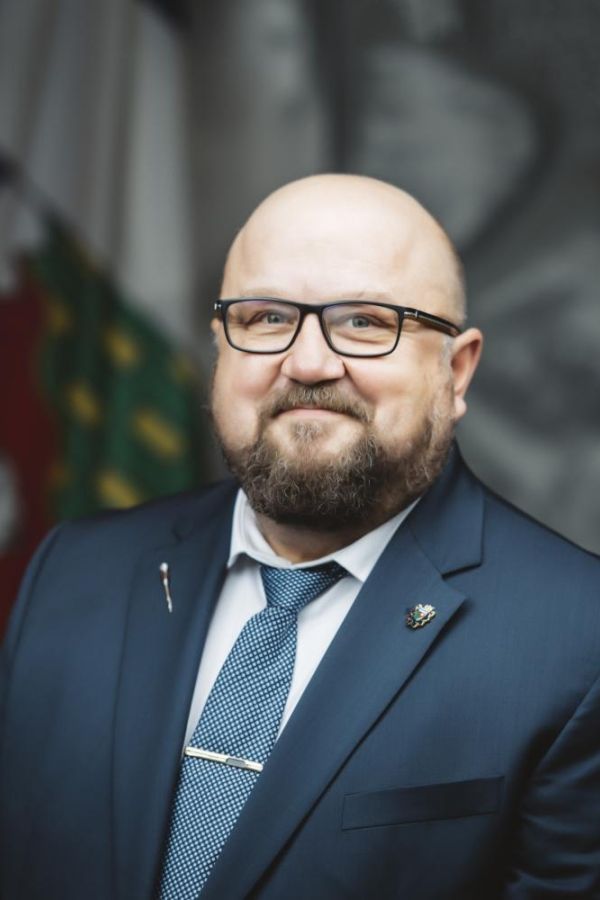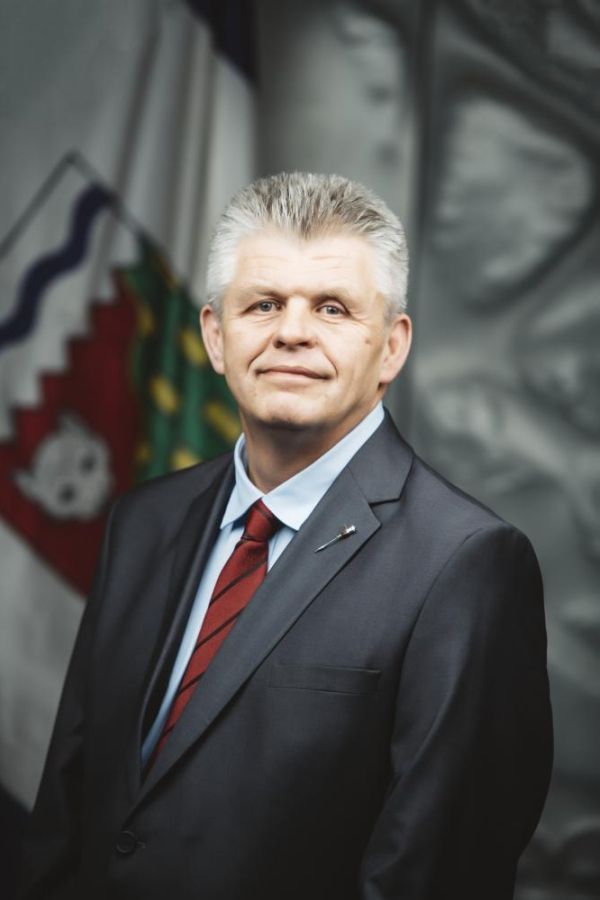
Thank you, Mr. Chair. Yes, there were. So maybe a little bit of history. So we started -- the original planning started for this project back in 2015 with the conceptual design. After the conceptual design phase, in 2022 we did put this project out as a modified P3 through Infrastructure as another alternative way of doing it, but the costs that came back on the proposed P3 project were out of the scope of the budget so that specific approach was not taken, and we went back to taking the approach of the design putting it out to tender as the project moved forward. And so I'll pass it to Dr. Kelly to add additional detail. Thank you, Mr. Chair.
Thank you. I'll go to the deputy minister.
Thank you, Mr. Chair. I think it's -- as the Minister noted, this is the headquarters for forest fire management for the entire Northwest Territories, and the facility that we have right now hasn't been doing what we need it to do for many, many years. I think with the last several fire seasons that we've had and how challenging they are and a knowledge that climate change is impacting our fire regime in the territory that this has become a critical issue. You can't -- you need a building where you can get the work done and get the materials out to the regions efficiently and effectively when you have as many fires as we have going on right now, and the only suitable option through a number of studies that we looked at is to build a new fire centre within Fort Smith. Thank you, Mr. Chair.
Okay, thank you. I'll go to the Member from Yellowknife North.

Thank you, Mr. Chair. I'll just quickly go to another project I wanted to know about on this list which is a project down on the Ingraham Trail which is within my riding. If the Minister could explain a bit more about what is this 80-foot detection tower that is going to be built on the trail, where exactly on the trails you know, and explain what are some of the purposes of that new project. Thank you, Mr. Chair.
Thank you. I'm going to go to the Minister.

Thank you, Mr. Chair. Yes, so this is part of the territorial detection network. So a number of sites, I believe to date there's been 12. We have 12 detection sites, nine of those would be camera-based. This would be the same type of setup where it would be a remote camera installation that would allow for remote observation of the area. The specific location on the trail, I don't have that information currently at my fingertips. But it is part of a much larger territory-wide project to install these infrastructure detection sites near communities to ensure that we have adequate coverage to detect forest fire activity within a zone that could potentially impact a community at a very quick rate. Thank you, Mr. Chair.
Okay thank you. Next on my list now I got is the Member from Range Lake.

Thank you, Mr. Chair. So the ECC has received its report into -- or its after action report that had a number of recommendations. Many of those were capital recommendations that are -- I think you could find here quite clearly. So does the Minister feel that the investment by these expenditures is sufficient to meet the recommendations in that report? Thank you.

Thank you. I'm going to go to the Minister.

Thank you, Mr. Chair. Mr. Chair, this capital plan was developed prior to the report, the after action review being released, and some of the projects within this plan certainly do address some of the concerns raised through the after action review but they don't necessarily cover all of those. A lot of these projects were supported by an initiative from the federal government on a three-to-one cost sharing basis. And so what ECC did was took their allocation for capital and used that to leverage the federal government dollars to get -- to catch up on some of the backlog capital projects that were lagging behind. It's quite a demand within our budget and it certainly did take some of the years off of where we could have potentially landed. Thank you, Mr. Chair.
Thank you. I'll go to the Member from Range Lake.

Thank you, Mr. Chair. Could the Minister point out, like, some kind of -- some of those high level investments that meet the recommendations of the after action report. Like, the most significant pieces in this list that could help meet those -- the new -- or the need that's left unfilled that's called for in the report. Thank you.
Thank you. I'll go to the Minister.

Thank you, Mr. Chair. So specifically to pick out individual projects, I think that overall a lot of the -- we look at -- we have communication projects. We have the detection projects. We have additional -- like, in here we have the wild land fire trucks, we have the -- sorry, the value protection trailers. So these are all pieces of infrastructure that are designed to support communities to ensure that the communities around the territories have the resources within their communities to support the community as well as ECC in how we are able to quickly respond to incidents. Currently now we have wild land fire engines in the South Slave essentially and in Yellowknife region. We don't have that type of infrastructure currently up in the Beaufort Delta. So, you know, that's one example where now we will have more infrastructure available to the departments in all of the regions in an effort to come across and have a consistent approach across the NWT. And part of our plan is we've gone through time -- and this started a number of years ago -- was trying to have consistent infrastructure in all regions and at all bases, so irregardless of where our employees go within NWT the equipment is the same. So the training that they receive they can use irregardless of the region or location that they're in. So that's part of how this infrastructure plan supports the overarching goals of the report from the after action review. Thank you, Mr. Chair.
Thank you. I'm going to go to the Member from Range Lake.

Thank you. And it's the -- does the territorial fire centre factor into those recommendations as well? Thank you.
Thank you. I'll go to the Minister.

Thank you, Mr. Chair. Certainly, I think the territorial fire centre is a key piece in our ability to respond in a timely manner and an effective manner. It will be a facility that allows for our territorial -- I lost my train of thought there, sorry.
It allows for our territorial leadership, so our territorial duty officer and support staff, to have a facility that has all of the necessary tools to support the regional operations. It allows our team that is looking after equipment, warehousing, resupply, communications, detection, to have a facility that's all in one that allows for the work as well as the storage for all the related equipment and parts to be located out of one facility. It allows the management team and the team that does the significant amount of work to work within one location. Also within this plan it allows the capacity for the department to ramp up operations in the summertime. The amount of staff that's in the operation during the winter time is significantly different than the requirement during a fire season and which -- and that requirement has certainly been growing year to year as we have much more fire activity which requires more summer staff, more seasonal staff, and the new facility will have the capacity to support that. Currently, in the facility that we're in, there's not adequate office space, there's not adequate infrastructure to support a much larger contingent of people. So I think it's certainly something that will definitely enhance the ability to be responsive.
The proposed location is at the airport which will be closer to other infrastructure that supports the fire program in the air attack program, and part of the plan is also to move -- the heli bases in Fort Smith and Hay River are currently right next to residential areas, so part of this overarching plan is to also move those bases out to the airport. It increases public safety because of the flight paths do currently interact to a certain extent with the communities. Thank you, Mr. Chair.
Thank you. I'm going to go to the Member from Range Lake.

Thank you. So -- well, that's -- anyway, that sound very positive. I think the one thing that we've become aware of is that the NWT -- or we need more national coordination on this. We need more things like task team 2 that can do operations in the Northwest Territories persistently and not just when we have an emergency and whenever, you know, federal public safety initiatives around emergency forces and things like that or disaster relief forces. So I think having a facility like this sounds like a good way to anchor the NWT in that process because we have a -- you know, a high quality facility with adequate space and all that, then we can start bringing in those teams, modeling fire suppression exercises, and all the stuff they do. So I think this is a good way to meet the recommendations. We, of course, do not -- of the 2023 after action report, we, of course, don't want a repeat of that. We want to be able to get a handle on this going forward and make sure our citizens are safe. My biggest concern from that report is we would not be investing the required resources in it and oftentimes we hear -- with no offence to this Minister or any Minister but that, you know, we've already done everything, we really don't need to do that much, but thank you very much for your report, third party reviewer. And in this case it does seem like when there's -- when the department says we've actually done a lot of the work, well, we have this list of projects that speak to that. So I applaud the Minister for -- and the department for being proactive in getting this work out and in matching those federal dollars and in satisfying a lot of the recommendations that were made. Thank you.
Thank you. Next on my list I have is the Member from Deh Cho.
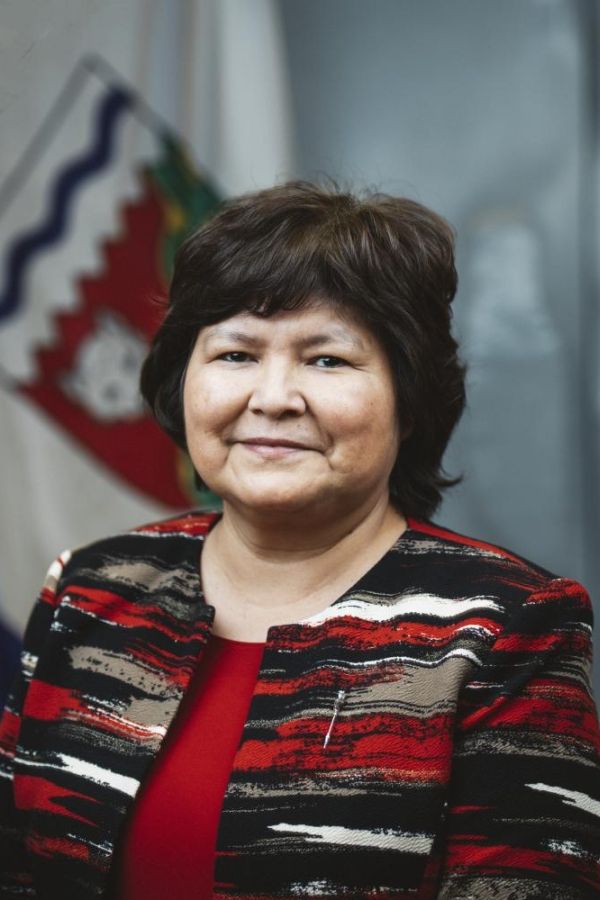
Thank you, Mr. Chair. In the -- I'm looking at the 18-foot sport shed for Fort Providence versus the jet boat to Norman Wells. Okay, so one is -- 25, 26, 25, 26 -- okay. What's the -- why is one -- what are the difference with the two boats? One is a -- this one's a jet boat. So (audio). Can you explain why one versus the other for two different places? Thank you.
Thank you. I'm going to go to the Minister.

Certainly. Thank you, Mr. Chair. Mr. Chair, when the specifications are designed for these boats, specifically boats -- you know, trucks are a little bit different where you can go with one standard design. Typically what happens is the -- as the tender is being developed and the specifications are being developed, there's an interaction between FMD who coordinates that procurement and the specific region and the needs of that region depending on varying factors. So the potential rivers that may be -- where the boat may be used in the Nahendeh riding could be significantly different than the river that the boat is used in Fort Providence which could be different than a boat that's used in Yellowknife. So typically that's the reason that they may not be exactly the same. It may be due to the different terrain. Also depending on the program that the boat is supporting, there may be different needs depending on equipment or material that may need to be moved or used or how the boat is configured. So they're not all necessarily the same but they're certainly based on the need of the specific program. Thank you, Mr. Chair.
Thank you. I'm going to go to the Member from Deh Cho.

Okay, thank you. I guess water's really low in the Fort Providence area and all the area. Up in the Sahtu, it's low too. So I guess -- anyways, that -- I have a question about that centre, the one that was in Fort Smith, the territorial fire centre. That -- okay, so you said it was -- there was $32 million allocated for it. $16 million was already spent. That's just to -- and there's no way to relocate that to anywhere else; it stays in Fort Smith? Thank you.
Thank you. I'll go to the Minister.

Thank you, Mr. Chair. Yes, Mr. Chair, the FMD is a headquarter function. So it is part -- forest management division is considered part of headquarters but it's based out of Fort Smith. So that's one of the large key employers for the community. The program has been there since devolution -- before devolution, it's been based out of Fort Smith. If I was to try and go back in time, I would say since the '60s. And so over time, it has evolved into the location that it is at now, has a significant number of deficiencies that I identified earlier which is certainly part of the driving force behind the new fire centre in ensuring that we have the adequate infrastructure to support the program and the rest of the Northwest Territories. Thank you, Mr. Chair.
Thank you. I'm going to go to the Member from Deh Cho.

What services can expand to the smaller regions for, like, jobs from that territorial centre? Thank you.
Thank you. I'll go to the Minister.

Thank you, Mr. Chair. Mr. Chair, the territorial forest fire centre supports many regional operations. So every region has a regional fire base so in the five -- Yellowknife, Hay River, Fort Smith, Norman Wells, Fort Simpson, and Inuvik, all have regional fire bases, and there are also smaller bases at other communities within all of those regions. So Fort Providence, for example, has a base and fire crews based out of there.
We certainly do attempt to work with the regions, and I've also had some conversations with the department about looking at decentralizing some positions that are able to be essentially, you know, done from other locations across the NWT. So at this time, those conversations are continuing not specifically related to the territorial fire centre, however. Thank you, Mr. Chair.
Thank you. I'll go to the Member from Deh Cho.

Thank you. I really hope you would keep the Deh Cho in mind for any positions that you can move out of the region -- out of the central area to the Deh Cho region. Thank you.
Thank you. I'll take that as a comment. Okay, I'm going to continue on. I'm going to go to the Member from Monfwi.

Thank you. I'm not going to ask -- carbon emission is important, but I'm not going to ask about that regarding these trucks. One truck, is that one truck allocated for Behchoko? Because, you know, a lesson learned from the forest fire 2023 and prior to that Whati went through the same thing probably in 2017 or 2018, and now we have all-season road and this truck, it's going to be useful. There's Behchoko, Edzo, and Whati. Why only one truck that's allocated to Tlicho region?
Thank you. I'm going to go to the Minister.

Thank you, Mr. Chair. Mr. Chair, some of the -- so I don't have the specific number, but I can give you a pretty good ballpark number.
So within the Department of Environment and Climate Change, there's approximately between, I'd say, 120 and 140 trucks that are used across all of the departments and divisions and many of those, depending on location within NWT, if you're driving constantly up and down the Dempster Highway or if you're driving on winter roads or, you know, Whati, for example, right where the -- so part of the plan here and how these are disbursed throughout the capital plan for the department is to try and take an all-of-territory approach in how we approach replacing motor vehicles so that we're constantly rotating that inventory and ensuring that the locations that require new trucks that spend a lot of time patrolling the highways and driving in those kind of conditions, we're trying to ensure that we replace those very regularly. And we will use some of the other vehicles that come out of those locations and use them in other locations where they're just running around town. They're always maintained in a safe condition. But it's a very large fleet of trucks across the department, and ensuring that --

(audio).
Thank you. I'm going to go to the Member from Monfwi.

I do apologize. Yeah, okay, you know, Highway No. 3 and Tlicho highway, it's one of the busiest highway right now, and Highway No. 3 from Behchoko to here and then partways to Fort Providence, that's the busiest highway because of the Deh Cho Bridge. So that's why I'm kind of a little bit surprised because you said, you know, like, they go on the road. You know, these -- our community members, they watch, you know, for forest fire and things like that so why only one truck that's allocated and knowing, you know, people drive on the highway, especially in the summer. Highway No. 3 is one of the busiest highway. It's one of the busiest highway in the Northwest Territories than South MacKenzie's highway, highway leading to Fort Smith. So I'm just a little bit surprised that, you know, only one truck to go on the highway in Tlicho region. And after what we went through in 2023, I thought there would be more than one truck.
And not only that too, you know, like, this territorial fire centre that's in Fort Smith, Frank Channel, it's right in the centre. We have the channel over there. And just like what my colleague said from Deh Cho, why everything -- it just seems like, you know, like, territorial fire centre in Fort Smith is going to get upgraded more but the Frank Channel, we're close to the capital where all the infrastructures are, why Frank Channel -- there's nothing going to Frank Channel. Like, we do need fire centre just like the one that Fort Smith is -- will be receiving. I'm just a little bit -- like, this is not good because, you know -- I know you said that you've been -- you know, that fire centre has been there since the '60s but that's the south, south of us and, you know, it's a long ways from where majority of the people live because Frank Channel is -- or Behchoko is -- you know, we're right in the centre. And Deh Cho too, and Fort Providence, they're just right there too, and we're getting nothing, less. So why is that? Why only Fort Smith is on the budget to get almost everything?
What you went through in 2023, we went through the same thing. So I -- if he can answer why only in Fort Smith, not in other places where, you know, we had the same problem. We lost four houses. We lost four infrastructure but not in Fort Smith, you know. So why everything is going to Fort Smith? Thank you.
Thank you. I'm going to go to the Minister.

Thank you, Mr. Chair. Mr. Chair, so for 2025-2026, there's one truck for the Tlicho region; however, the capital plan for trucks is spanned out over the 20-year capital needs assessment so those trucks are constantly being replaced. So I don't have the specific detail on previous years but as things go forward, that's a constant. I'd also like to just say that so within the last -- since 2016 in Frank Channel specifically, there has been a significant investment in the base there. There was a new crew standby facility built. There was a new warehouse built. There was a new dispatch centre built. They recently replaced the communication tower this past summer. So there has been significant investment. The investment, how the department has been looking at capital is that there's more than just -- there's -- we look at the whole region and over a five-year average is how it's been approached so that obviously you can't break out totally evenly amongst all of the regions every year, so if you look at it in a bigger picture, the approach has been to try and break that out more evenly over time. Thank you, Mr. Chair.
Thank you. I'm going to go to the Member from Monfwi.

Yeah, well, that's good, no, that's good. I know that, I see that. You know, the -- it's -- I live in Behchoko in -- you know, so I see -- I see the new infrastructure that was -- you know, was upgraded and so which is good, you know, but we're -- I'm just saying that Frank Channel is in the central locations. You know, we're close to Yellowknife, we're close to south. You know, we're not too far off in the south. We're closer to the border. So that's why I'm saying, you know, like, territorial fire centre, I think, you know, why not that go somewhere else? It should have been more -- or, you know, like, build fire centre, you know, in a lot of those small communities, small -- you know, or regional -- or other regional centre. I'm sure we will benefit more from that because unemployment rate is high in small communities. We don't have a college. So where -- if our young people wants to be educated, they have to go somewhere else and this is a good summer job for a lot of our young people. So that's why I'm asking. I'm asking about that territorial fire centre from a lesson learned from 2023.
But there's another one here too. Territorial, it says -- it just says territorial, but it doesn't say the communities, where it's going. Like, that whip line floats and air attack officer, wildlife simulators, all that, there's a lot of them. Where are these positions -- or where are these equipment going, which communities? Where -- like, is it going to the territorial fire centre in Fort Smith? I'm not too sure. It just says territorial. It would be nice to know where some of these are going to be going. Thank you.
Thank you. I'm going to go to the Minister.

Thank you, Mr. Chair. And thank you for question. Yes, I'd love the opportunity to explain this one. So the territorial infrastructure is infrastructure that supports the territory as a whole. So I can go here and look at the lightning detection system, which is a piece of territorial infrastructure. So there's a network of detection sites across the NWT that provide lightning data to all of the NWT, to all of the bases in all of the regions, as well as to the territorial fire centre. This type of infrastructure supports all of the firefighting activity. So it's not necessarily assigned to a specific community because its location may not be in a community.
Very similar, the whip line floats are a piece of infrastructure. That is there to support the 802 water bombers so that if there is a damage to a float on one of the aircraft, that that aircraft is not out of service for a long length of time. The lead time to build these floats is approximately four years so this is the kind of inventory that we need to have available and on-hand to ensure that we can support the overall territorial fire operation. Thank you, Mr. Chair.
Thank you. Okay, I don't see anybody else have their hands up for -- to this item here. I'm going to go to continue on.
Department of Environment and Climate Change, wildlife and forest management, infrastructure investment, $24,417,000. Does the committee agree?
Agreed.





